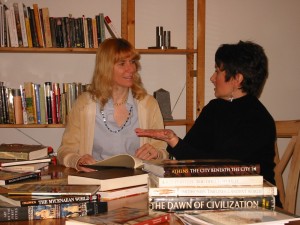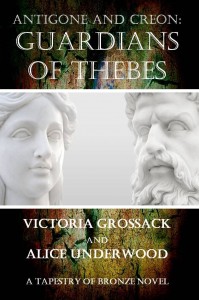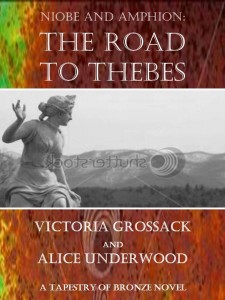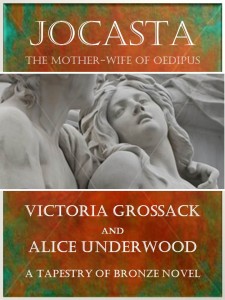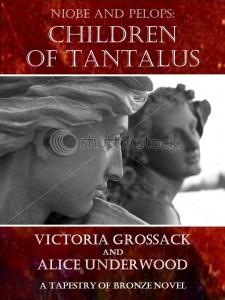I have just been offered the chance to give a series of lessons on creative writing on board the Thomson Dream, sailing from Lisbon to Barbados – free flights for self and husband and all the amenities of the cruise included. We leave on Nov 25th.
Monthly Archives: October 2013
The Sultan’s Wife by Jane Johnson
I thoroughly enjoyed this book. From the opening pages the author plunges us into an exotic and unfamiliar world – unfamiliar to us, that is. We know from the start that we are in the hands of a writer who is completely at home with her setting.
The action takes place in seventeenth century Morocco, at the court of the Sultan Moulay Ismael. Johnson is adept at employing all our senses to create her scene. Visually, she gives us a picture of luxury and colour, contrasted with extreme squalor. She conjures up the scents and tastes of exotic perfumes and pungent spices and the sound of rain, or music – or the screams of men under torture.
It is a country subject to the whims of the sultan, built on slavery and terror; but also a place where beauty is prized and art and trade flourish.
In her two central characters Johnson has created people who grab our interest from the outset and our hearts very quickly afterwards. Nus Nus is a slave and a eunuch, but he is also a man of courage and integrity, capable great kindness. Over the course of the story we see him develop from a fatalistic acceptance of his position and the terrible wrong that has been done him to a man capable of becoming the warrior his tribe would have made him had he not been captured. At the same time, we learn that fighting is not in his true nature. Given a free choice he would be a musician, a talent that is to stand him in good stead as the story progresses. He is also highly intelligent. Originally bought by an English doctor, who treated him more like an apprentice than a slave, he has been taught to read and write in several languages, talents which have brought him to a position close to the Sultan. It is part of his job to keep the ‘couching book’ which requires him to witness and record the sultan’s sexual encounters with his many concubines, in order to keep track of any issue and their place in the succession. Seeing how he grows from this position of humiliation to a man with his pride restored is one of the great pleasures of this book.
The second character is Alys, an Englishwoman captured by corsairs and given to the Sultan as a concubine. Ismael is captivated by her fair beauty, but before being taken to his bed she must convert to Islam. She refuses and it is Nus Nus who is given the task of persuading her, knowing that if he fails both their lives will be forfeit. In the process, he falls in love with her himself and is then forced to witness her violent rape by Ismael. A child comes of the union and Alys is transformed. Having reached the age of twenty-four unmarried she has almost given up hope of ever being a mother and her devotion to little ‘Momo’ is total. The main plot of the book turns on the efforts of Alys and Nus Nus to preserve his life from the jealousy of Zidana, the sultan’s chief wife.
In Zidana and Ismael Johnson has created two characters to stand in stark contrast to her hero and heroine. Ismael is pathologically unstable, given to fits of uncontrollable rage in which he kills and maims without compunction, and which he seems to forget immediately afterwards. Zidana is a monster, in size and character. Clever, sly and ruthless she is an expert in poisons and a believer in the Black Arts. Between the two of them Nus Nus and Alys must steer a perilous course.
Half way through the book the scene switches to Restoration London and once again Johnson sets the scene masterfully. The city is still recovering from the Great Fire and we see the contrast between the great swathes that are still ruined and the magnificent new buildings that are rising amid the desolation. The royal palaces are as opulent as Ismael’s but in a very different style. Portraits and tapestries showing scenes of life replace the abstract designs allowed by Islam and the women, by contrast with the all-enveloping clothing of the Moroccan ladies, flaunt their bosoms for all to see. Johnson has fun demonstrating how easily some of the Moroccan embassy are seduced by this new lifestyle. We are introduced to a number of people familiar from the history books, like Nell Gwynne and Samuel Pepys. But here, as in Morocco, Nus Nus and Momo are in constant danger.
There are enough plot twists and cliff-hangers to keep the reader avidly turning the pages. A truly satisfying read.
Two wonderful reviews
THE LAST HERO:
I have been a devoted Mary Renault fan almost all my adult life. For me no book quite rivals The King Must Die, except perhaps Hilary Mantel's Wolf Hall - and this from a first class English Literature graduate and a secondary school English teacher of 27 years standing! I have spent decades looking for something as good without success, until that is I recently discovered the Last Hero, on the day of my 53rd birthday. Admittedly I haven't finished it yet, but I am finding it spellbinding. De Bernieres (I am a great fan of his too) was quite right in his praise: it is just like Renault. The prose is tightly composed with none of the fussiness of similar novels in the genre; and the period details are most convincing. Simply put when I'm reading this book I find myself there, with the characters of the story! Thank you so much for making my dream of another novel of the quality of The King Must Die come true. If you have any plans to set another novel in this time period I would be delighted to hear about it. (Stephan Smart via website) OPERATION KINGFISHER: I am always excited to see a new book out by Hilary Green. It amazes me that someone who writes such wonderful, gripping and exciting stories has trouble getting her work published when there are other authors out there who write terrible books and hit the bestseller list. After her last set of books which took place during the first world war, Hilary Green takes us back to world war two once again and this time we follow the escapades of two teenagers, half French, half British as they try to make their way back to England to join the fight for the allies. Along the way they are faced with much adversity, but also make friends and gain the respect of the resistance fighters for their bravery. Their mother also has a bit of a side story as she struggles to accept that the Germans occupying her country and her home are just ordinary people who dislike the war as much as she does. Like all the books I have read by Hilary Green this was tough to put down, and even better the ending left me thinking there could be a sequel. I for one would love at least one more story involving these wonderful characters. I know that their adventures and acts of bravery are far from over as there is still at least three more years left before V-E day by the end of the book. I can only hope there will be a sequel or two out of this story. I will be eagerly awaiting Hilary Green's next book, no matter what it's about. (Leigh on Amazon)
Interview with Victoria Grossack
1 When and how did you first encounter the Greek myths? Was it at school?
When I was six my grandfather gave me a book on Greek mythology. The book was aimed at kids, with simple language and lots of illustrations. Funnily enough my grandfather’s first name was Homer. He hated the name – he made everyone call him “Duke” – but I like the fact that I come from the line of Homer.
2 When did you decide to write a series of novels based on the myths?
When I was 14 and a freshman in high school, we read Sophocles’ Oedipus Rex. I felt then that the story would be more interesting from Jocasta’s point of view, but I was sensible enough to realize that I did not have the skill or the knowledge to write it. The idea stayed with me, and I finally reached a point where I felt ready to attempt it, in collaboration with Alice Underwood.
While we were writing we researched who had been in charge of Thebes before Laius came to power. The queen was Niobe, the one whose children, according to the myths, were killed by the arrows of Apollo and Artemis. Obviously the gods did not really kill the children! When we examined many myths simultaneously, we believed we discovered the actual murderer. That was one reason for our decision to write the Niobe trilogy: Children of Tantalus, The Road to Thebes and Arrows of Artemis; we wanted to expose the actual murderer. We were also fascinated by the people in the stories, for they are still influencing us today.
3 You write in partnership with Alice Underwood. How did that come about?
We were colleagues who had collaborated very successfully on other projects. We discovered we both had an interest in creative writing, and especially in Greek mythology. We had tied for first place in a little short story writing contest, which seemed to be another encouraging omen.
4 How does that work? Do you do a chapter each, or do you work together? Are you in the same room, or is it all done by e-mail?
We often meet in at the beginning or the end of a book while we figure out the timeline and other major issues. If we’re in a busy time in the writing process, we’ll usually have a long phone call on weekends. And there are thousands of emails. Alice has 8 different folders in my Outlook: one for each book, one for general writing project emails, and another for other stuff.
It took us a while to figure out how to best use our writing strengths and weaknesses which are fortunately complementary. I am very good at plot so I usually do the first draft. Alice is better at visual details so she adds most of the description afterwards. The process is iterative: she suggests some plot details and I even do some description. She also does all the covers, so if you’re admiring the covers, doff your hat to her.
5 What made you decide to focus on the Theban stories, rather than any of the other myths?
My initial fascination was with the story of Jocasta, and as that was set in Thebes, it led naturally to the other stories in Thebes. Our current project, based on Clytemnestra, has little do with Thebes.
6 How many books are there in the series? Is it complete?
We planned six novels and have written five of them. The novels are Jocasta: The Mother-Wife of Oedipus, and its direct sequel, Antigone & Creon: Guardians of Thebes. There’s also the Niobe trilogy: Children of Tantalus: Niobe & Pelops; The Road to Thebes: Niobe & Amphion; and Arrows of Artemis: Niobe & Chloris.
7 You have obviously researched the period and the background very carefully. What were your main sources?
We have both visited the places involved. I spent a day with the archaeological director at Thebes, and he drove me around to some of the important sites in the area. I have also explored the ruins at Delphi, Pisa/Olympia, Argos, Tiryns and Mycenae. I went to Turkey, to visit the Niobe rock, as well as the statue allegedly carved by one of her brothers. Then there are the many museums in cities such as Thebes, Athens, Olympia, Rome, Jordan, Turkey, London, Berlin, Munich, Paris and New York. Besides that, we have watched documentaries, read books, and corresponded with the owners of several websites dedicated to Greek mythology. There’s a bibliography and a set of links at our website.
8 Do you think the original myths have any historical truth, or are they just folk tales?
We think that many of the men and women did exist. Fantastical elements such as centaurs and winged horses did not, but places such as Troy have been located as well as others. Just outside of Thebes are a pair caves which have been determined to be royal tombs. Legend says that they are the tombs of Eteokles and Polynikes, the twin sons of Oedipus and Jocasta. In Thebes there is still a fountain named after Dirke. Why was the Peloponnesus given that name if Pelops never existed?
However, in some of the myths, and not just the fantastical portions, there are contradictions and inconsistencies. For example, after the war between the sons of Oedipus at Thebes, what happened to the daughters? In the most famous version Antigone kills herself but that contradicts other stories about her. We research the different versions and choose carefully between them.
9 If they are just folk tales, why do you think they were made up?
They were made up for the same reasons that people make up stories today: for power, glory and entertainment. Someone trying to strengthen his claim to a throne improved his credibility by saying he was descended from a god. In some cases we even know who the real father was, and yet the hero still made the claim. Herakles’ real father was Amphitryon, not Zeus.
We have a better-attested example in later history, when Alexander’s mother decided that her son’s real father was Zeus, and not Philipp. She was trying to improve her son’s claims to glory. Then there are all the times that the Roman senate voted to deify various Caesars.
Other stories seem to be a combination of glory-seeking and entertainment, such as the fights with beasts and monsters. We believe that bards frequently stole from other bards, so that if someone had a good bit about a hero fighting a giant in one song, another bard might copy it into his song to glorify his own hero.
10 You have succeeded in taking the more incredible events in the stories, for example the sacrifice of Pelops to Zeus by his father and his subsequent return to life, and giving them a believable explanation. Was it difficult to see what might lie behind the myth?
We work very hard at providing natural explanations for the events which seem supernatural. We don’t believe in supernatural events and we don’t see why readers today would do so either. So when Tantalus offers his son Pelops as a meal to the gods, we had two major challenges: how to explain his return to life, and how to show the gods’ arrival. As resurrection falls into the category that we consider supernatural, Pelops does not actually die in Children of Tantalus, but is simply very close to it. How to have the gods show up was difficult, until I remembered having witnessed a meteor shower that was as spectacular as fireworks. A sight like that might have made the people of three millennia ago believe that the gods were descending from the heavens. We timed the banquet of Tantalus to coincide with the Leonid meteor shower that takes places every November. Of course the characters don’t know that it’s a meteor shower; they believe that the gods are on their way, but hopefully readers see both sides.
Coming up with these explanations is a challenge, however, and so we have hesitated to attempt some of the other stories. Herakles is fascinating – we met him in Antigone & Creon, for his first wife was Megara, one of the daughters of Creon – but we don’t know how to depict all the monsters in his labours. They’re just too fantastic.
11 Roughly when are your books set, for example in relation to the Trojan War?
Our current project, based on Clytemnestra, Agamemnon’s wife and killer, is contemporaneous with the Trojan War. The other stories are set one or more generations before. We have a huge spreadsheet for tracking events and characters to make sure that our novels don’t contradict each other. The characters in one book, however, may interpret the events of another novel differently.
12 I see there are Greek versions of the books. Do you speak and write Greek or did you have them translated?
Unfortunately we do not speak Greek. We read the alphabet well enough to drive around the country and to sound out place names. Kedros, our publisher in Athens, arranged for and paid for the translations.
13 I notice that your books are published by Create Space, which is a self-publishing facility. Did you offer them to mainstream publishers? If so, what was their reaction?
Yes, we had an agent who repeatedly tried to market the books and nearly succeeded with big names such as Penguin and Random House. The problem with Greek-mythology-based books is that they have an oft-deserved reputation for being difficult and inaccessible. We have worked hard to overcome this in our own writing – and it is a real challenge – so much so that when we get people to pick up the novels they find that they are far more engrossing and accessible than they expected.
14 What plans do you have for future books?
We have written five of the six books that were in our original set. We’re currently working on the story of Clytemnestra. We may write more together, but we have not settled on which ones.
In the meantime, I’m also writing some mysteries. I had an idea based on Jane Austen’s Emma and so I wrote The Highbury Murders: A Mystery Set in the Village of Jane Austen’s Emma. I had so much fun with it and the response has been so positive that I am working on other cosy mysteries, although in a modern setting.
Review of ‘The Children of Tantalus’ and ‘The Road toThebes’ by Alice Underwood and Victoria Grossack.
CHILDREN OF TANTALUS &
THE ROAD TO THEBES
(Tapestry of Bronze series)
by Alice Underwood and Victoria Grossack
These books are a fascinating foray into the world of Greek mythology. The writers have succeeded in taking the ancient legends of Pelops and Niobe and re-telling them as exciting and romantic novels. Pelops, the younger son of King Tantalus of Lydia, chooses exile after being attacked by his own father, and his sister Niobe runs away with him to escape a forced marriage. Their subsequent adventures take them to Athens and then to Pisa, where King Onomaius is challenging all suitors for the hand of his daughter Hippodamia to a chariot race. If they are beaten, their lives are forfeit and their heads are exhibited on stakes in front of the palace. In a thrilling account of the race Pelops, aided by Niobe, who arranges to sabotage the King’s chariot, wins, kills Onomaius and takes his throne.
From then on Pelops’ behaviour becomes increasingly unstable and autocratic, while Niobe’s apparently hopeless love for the the musician Amphion takes centre stage. We are introduced to the complex politics of the various city states and the varying characters of their rulers, which are woven into the ‘tapestry’ of the series’ title. There are enough plot twists to keep you turning the pages and the characters are vivid and sympathetic enough to make the reader care about their fates.
My only reservations arise from the sense that, in making their story appealing to a modern reader, the authors have lost the sense of strangeness, of a very different way of life and system of belief, that we get from the myths themselves. The gods are frequently mentioned and the need to honour and appease them motivates the actions of the protagonists; temple building and animal sacrifices are important ways of placating them. But I missed the sense of all-consuming power which placed religious ritual at the very heart of society. This was an era when, not many years ago, the King was ritually slaughtered every spring and his blood spread on the fields. Also, I feel that the character of Niobe, appealing as it is, does not completely fit the period. In their effort to create a feisty heroine to fit modern tastes the writers have given her competences that I do not believe a woman of that period could have had. Niobe is brave and intelligent, which could be true of a woman of any era, but her scepticism about religion and her ability to organise complex building projects seem to belong to the modern world.
Perhaps as a writer who has immersed herself in a study of Mycenean civilization, I am unduly critical. These caveats apart, I can recommend these books as an enthralling excursion into a world which is, sadly, becoming less and less familiar.
Forthcoming events
I shall be signing books at Linghams book shop in Heswall on Saturday Oct 5th from 11am. I shall also be talking about my work at the Rock Ferry library from 2.15 on Monday Oct 7th as part of the Wirral Book Fest.

